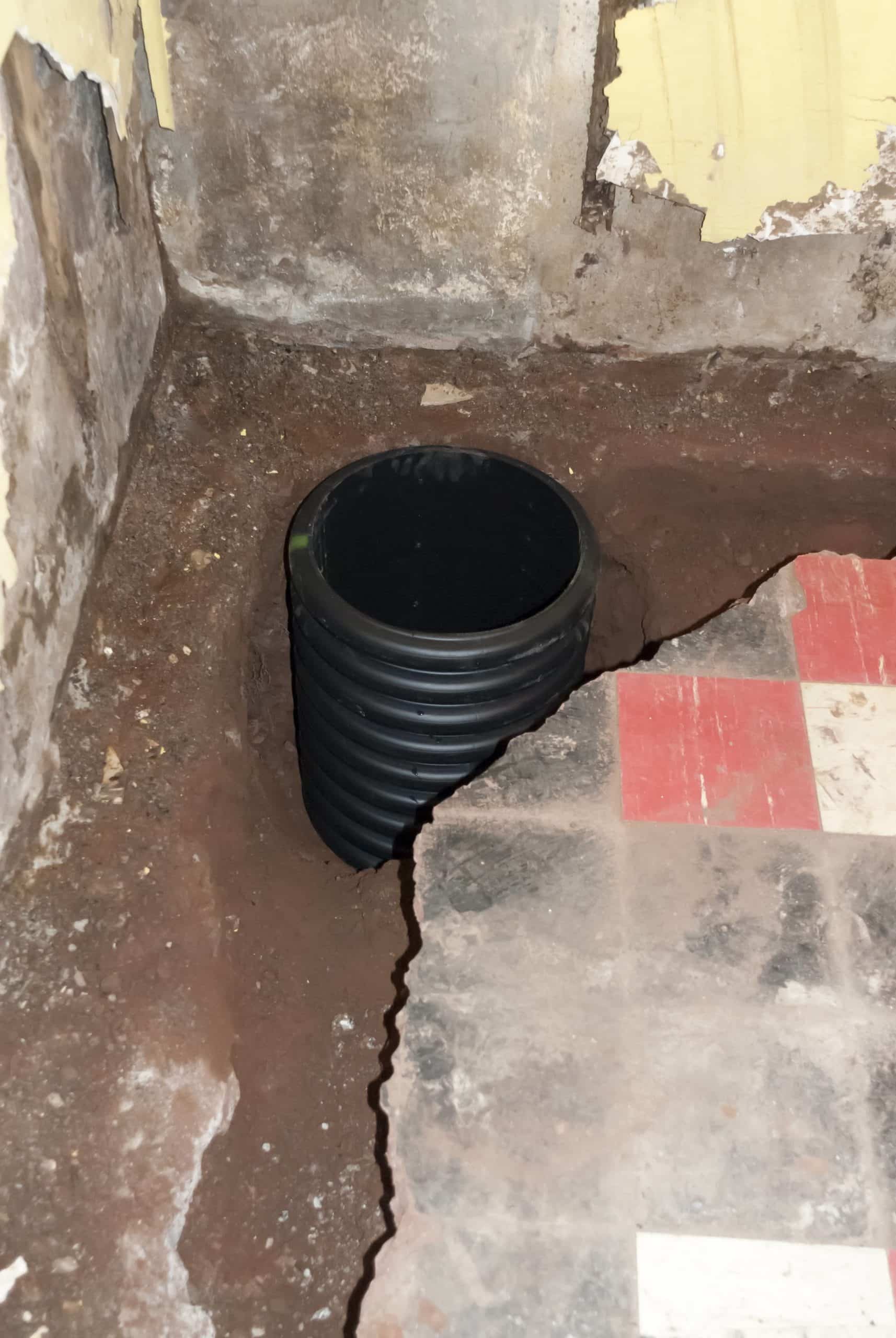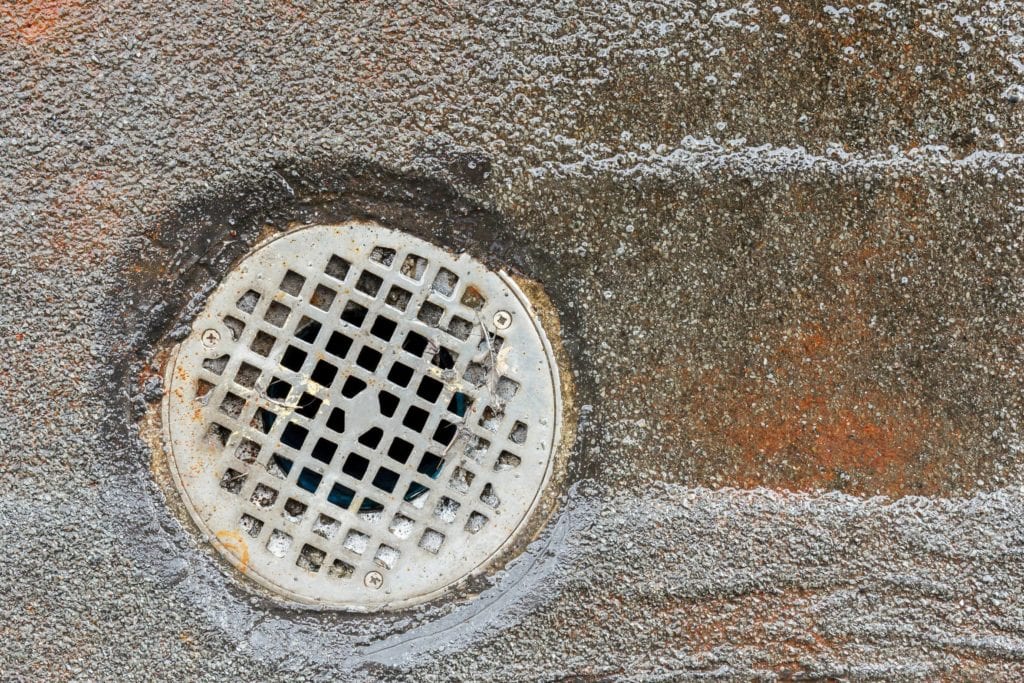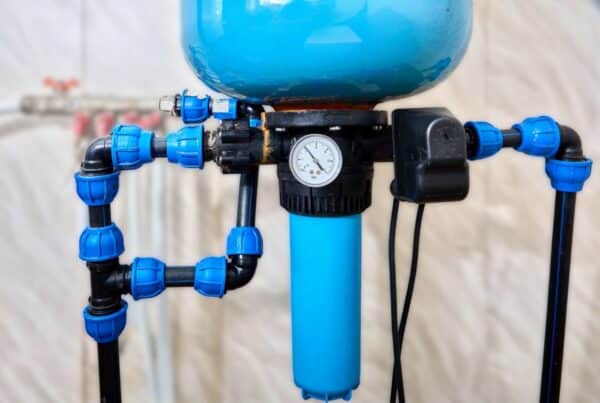
Buying a home with a basement is common in the Northwest. Sometimes they are a finished basement and sometimes they are not. When we buy a house, we aren’t expecting there to be a wet basement. If this is the case, do you need a French drain in the basement? The answer can be Yes if you need water to be rerouted away from the home. However, there are also other alternatives with pros and cons.
Let’s look at why you need to know about French drains, what they are, pros and cons of French drains and other types of drains, how a sump pump helps, how to prevent water in the basement, and when to call a professional.
Why It is Important to Know About a French Drain in the Basement
If you are having water problems in your basement, you may need a French drain. What is this? It is a trench that has a perforated pipe that takes the groundwater and surface water and diverts them away from the home. It lies in the interior of the perimeter of the basement and is below ground level. They are necessary for homes to keep the water away and to keep mold from growing in the basement.
However, there are other alternatives as well.
French Drain in a Basement: What is it
When installing a French drain, it is important to dig the trench no smaller than 12 inches (1 foot) wide and 1 foot deep to hold the drainage pipe and the gravel. Additionally, washed gravel and water-permeable landscape fabric are also necessary to allow water to pass through to help control weed growth. Surrounding the pipe with gravel helps keep anything out that can clog it in an unfinished basement. If a basement is built as “finished”, then walls are built on the inside of the drain so it can’t be seen. There are two French drain systems- interior French drains and exterior drains.
Pros:
1. If installed during the building of the home, it can add $1500-$2000+ to the cost of the foundation, but you don’t have to worry about doing it later.
2. Collects the groundwater and pumps it away via a sump pump to the surface and away from the home.
Cons:
1. Installing a French drain in the basement is difficult and expensive after the home is built-Requires a jackhammer to get through the concrete and digging a trench and shrubs, walkways, stairs, etc. have to be moved. You also have to be aware of buried gas and sewer lines. Lastly, installing one will cost over $7000.
2. Clogging can happen– it is possible that sediment and debris can clog the pipe, causing it to back up into the basement. The French drain can also collect sediment and clog and it is not easy to clear it out.

3. Settling occurs with a French drain– after the French drain is added, the soil starts to settle around the foundation and negative grading starts to form in the yard.
4. Doesn’t keep water out– water can still come in from the wall.
5. Lifespan– the drain may last only 10 years and then you have to repeat the process.
Here is a video on how French drains work:
Other Drainage Systems
Curtain Drains
If you have water that just sits there in the yard, a curtain drain may be what you need. This is different than a French drain. As mentioned earlier, the French drain allows water that flows in the wrong direction after storms to go out into the yard away from the home.

Floor Drains
Often added during construction as the floor needs to have a dip in it for the water to drain. These are more often in utility rooms in a home.
Pros: Many homes come with this as a standard feature. Collects water from various sources in the home such as a leaky hot water heater or the condensation dropping from an AC unit.
Cons: Difficult to install after construction as there will not be a natural dip in the floor and to add it can cost $5000 or more.
Exterior Drain Tiles
This is installed around the perimeter of the foundation and collects groundwater before it can get into the home. It is a flexible drainpipe and collects the water that pools at the bottom of the walls and then the sump pump takes it back to the surface
Pros: not as expensive if installed while the home is in the building process.
Cons: expensive if added after the home is built and also subject to clogging if not enough gravel added to the pipe.

Sump Pumps
The basement drains direct the water to the sump pump, which then pushes the water up to the surface and hopefully away from the home.
There are two types:
Submersible
This is installed in the basement about 2 feet wide and 1-½ feet deep. Usually seen where groundwater is an issue. When it reaches a few inches from the top, the sump pump turns on and sends the water outside of the home. They range in price from $100-400 and labor is an extra $600 – 1500 in labor costs. More powerful than the pedestal pump.
Pedestal
This is on a pole and about 4-8 inches above the collection pit. It has a float and as the water rises, it rises. When it reaches a certain point, the sump pump turns on and takes the water to flow out to the yard. This type ranges from about $80-$200 and installation about $600-1500. However, it is less powerful than the submersible so if you have a large number of groundwater issues, choose the submersible sump pump.
Make sure that no matter which one you choose, you have it plugged into a GFCI outlet. If the power goes out, the GFCI outlet will prevent electrocution. You also want to make sure you avoid any electrical fires

How to Prevent Water in the Basement
1. Landscaping
Make sure the landscaping is conducive for a home with a basement. If you have plants and shrubs that need to be watered, they will saturate the ground next to the house and can cause water to seep in. Remove the plants that do this and think about other types of landscaping that won’t have this water issue.
2. Grading Your Yard
if you have negative grading, where the ground slopes towards the house, you need to fix this. The slope needs to be away from the home or water will go into the basement.
3. Gutters on the House
Installing gutters on the home is important and making sure they don’t clog. Cleaning them out should be part of home maintenance. Adding downspouts is important and making sure they extend out from the home 4-6 feet, but 10 feet if possible. Also adding in a splash block under the downspout will help move the water away from the house.
All of these ideas can help with drainage problems in the yard and basement.
When to Call a Professional
Call a professional if you have water leaking into the basement and need advice on what you need to have installed. Also, if you decide to install one of the drains listed above, a professional is your best go-to. Lastly, if you find there is mold in the basement and not sure what the source is, a professional can help by inspecting the area for you.
Conclusion
Water drainage can be difficult in some homes depending on the foundation, the grading, and drainage in the yard. French drains are helpful and will get the water out of the home, but there are also alternatives. You will need to find out what works best in your situation. We will inspect your basement during our home inspections in Washington State. Question about water intrusion or the proper drain system for your home or in need of our services? Comment below.



